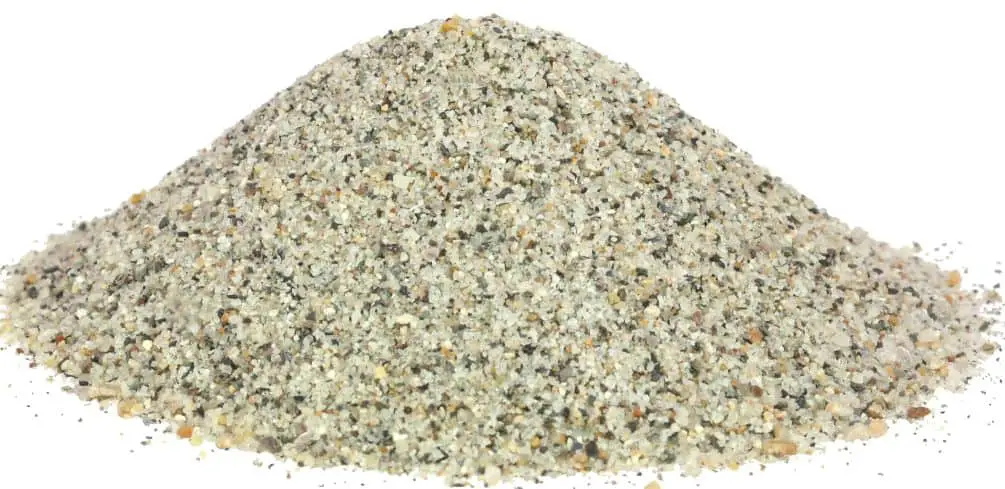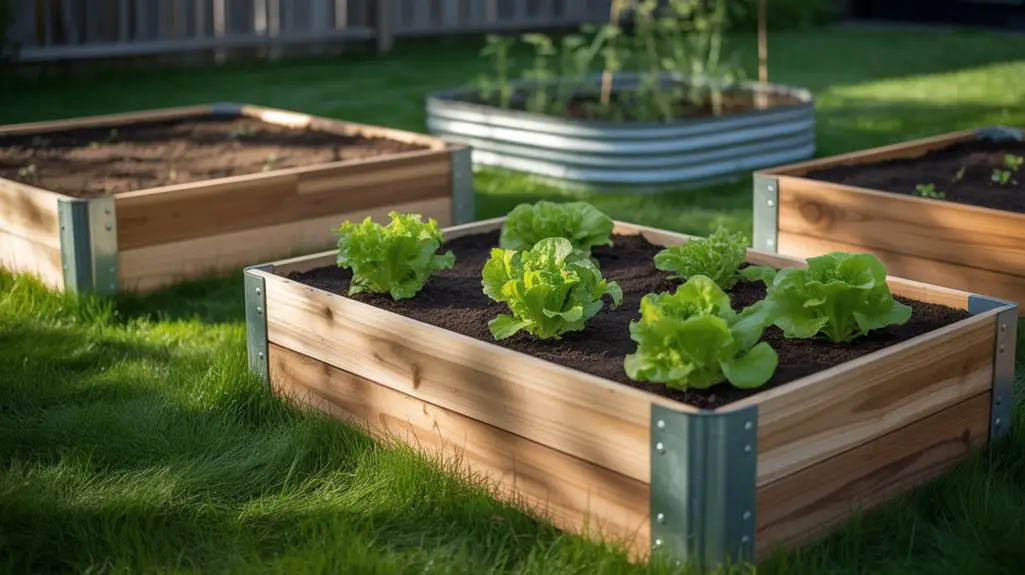Do you know the difference between masonry sand and play sand? If you’re a homeowner or even a contractor, it’s important to understand the differences between these two types of sand.
Masonry sand is an invaluable resource for many projects around the home, from laying bricks and blocks to filling in joints. On the other hand, play sand is specifically designed for use in playgrounds and children’s areas.
In this article, we’ll look at the differences between these two types of sand so that you can make informed decisions about which one best suits your needs.
Definition Of Masonry Sand And Play Sand
Masonry sand and play sand are two of the most commonly used types of sand. They both serve different purposes yet share similar characteristics. To the untrained eye, they may appear alike; however, upon closer inspection, one can see that there is a distinct difference between them.
Masonry sand is a coarse-grained type of sand with angular particles. It is often referred to as washed or clean sand because it has been washed of all impurities, making it safe for use in construction projects such as laying bricks and building foundations. Its texture makes it ideal for creating mortar between bricks and stones.
Play sand, on the other hand, is finer than masonry sand and contains rounded grains. It also includes some clay content which helps to bind the particles together when wetted – making it suitable for use in playgrounds and other recreational areas as well as landscaping projects such as gardening beds.
Furthermore, its soft texture makes it comfortable to walk barefoot and ideal for use in sandbox activities like castles building and sculpting. The differences between masonry sand and play sand are clear; while both types have their individual merits, knowing which one to choose will depend on the specific application or project at hand.
Characteristics Of Each Type
Transitioning from the previous section, this subsequent section will discuss the characteristics of masonry sand and play sand. The grain size, color, and particle shape of both types of the sand differ significantly.
Masonry sand typically consists of small grains that are slightly larger than those found in play sand. It is usually light tan or gray in color, and its particles are angular in shape rather than smooth. Masonry sand can be used as a base material for laying bricks, stones, and other masonry products because it compacts well and is resistant to erosion.
Play sand has much finer grains than masonry sand. Its color can range from tan to pinkish-white depending on the region where it was mined.
Play sand is soft and smooth since its particles are round; consequently, it does not compact as tightly as masonry sand when used in projects such as playgrounds or athletic fields. In addition, play sand tends to retain moisture which makes it ideal for use in areas with high humidity.
Although they have different uses due to their characteristics, both types of sand offer many benefits when used correctly in landscaping projects or construction work. Knowing their features can help you decide which type of sand is right for your project needs.
Uses For Masonry Sand And Play Sand
Masonry sand and play sand both have several unique uses. Masonry sand is most commonly used in construction as a base for laying bricks, blocks, stones, pavers, and more. It’s also known as ‘construction’ or ‘paver’ sand. Play sand is generally used for recreational purposes, such as in a child’s sandbox or playground. It’s often much finer than masonry sand.
Masonry sand has many other uses besides construction projects. It’s an ideal base layer to level an area of ground before installing a patio or walkway.
The coarse texture of the masonry sand helps it to settle into the soil and create an even surface. It can also be used to fill in cracks around the house foundation, driveway, or sidewalk to prevent water damage by holding off moisture and preventing soil erosion.
Play sand can be used for various types of art projects such as molding and sculpting, while its fine texture makes it ideal for use with charcoal drawings due to its ability to hold pigment well. Play sand can also be used in some gardening applications, such as filling gaps between stepping stones or creating paths between plants in a garden bed.
When mixed with potting soil, it can help promote healthy drainage for potted plants. No matter what type of project you are undertaking, there are plenty of uses for masonry sand and play sand that will help you get the job done right!
Price Comparison
Price is a major factor when it comes to selecting the right kind of sand. When it comes to masonry sand and play sand, one can make their decision based on the cost. Comparing the prices of each type of sand will give you an idea of how much you’re willing to spend on your project.
Masonry sand typically ranges from $15 to $25 per ton, while play sand averages around $8 to $15 per ton. The cost of masonry sand does not necessarily mean that it is better quality than play sand; however, due to its many uses and versatility, it is more expensive than play sand. On the other hand, because play sand has fewer uses, it tends to be less expensive than masonry sand.
When deciding between masonry or play sand, you may want to consider both price and purpose before making a purchase. It is important to compare the pricing and options available in order to get the most bang for your buck!
Ultimately, choosing the right kind of sand for your project depends on what you need it for and how much you are willing to spend.
Availability
Transitioning from the cost comparison of masonry and play sand, let’s now explore their availability. Where can you find masonry sand? How widely available is play sand? Let’s find out.
Masonry sand is readily available from most local sand suppliers, home improvement stores, and garden centers. Depending on your location, you may also be able to purchase it online.
However, if you’re looking for high-quality masonry sand, your best bet is to get it from a local supplier. They tend to have better quality control and more reliable products than their online counterparts.
Play sand is a bit easier to come by than masonry sand. It can be found at most major retailers like Walmart or Home Depot, as well as big box stores that carry toys and other outdoor items, such as Target. You can also find it online in bulk orders or in smaller quantities from specialty suppliers.
Overall, both types of sand are widely available in many different locations. When shopping for either type of sand, make sure to check with your local suppliers first to see what they offer in terms of quality and price before making a purchase.
Pros And Cons
Masonry sand and play sand can be tricky comparisons. Although they may look similar, they have their own unique pros and cons. To make the right decision, let’s explore how these two materials differ.
Masonry sand has a gritty texture that makes it ideal for filling gaps between bricks or stones, helping to create a durable structure. Its strength also means it is able to withstand extreme temperatures, making it an excellent choice for outdoor projects that must endure the elements. On the downside, masonry sand is more expensive than play sand and can be difficult to work with due to its coarse texture.
Play sand, on the other hand, has a softer texture and is better suited for indoor use in places such as children’s playgrounds or sandbox areas. It is also much cheaper than masonry sand and easier to work with due to its silky feel and fine-grain structure.
However, its lightweight composition means it can easily be washed away by rain or wind, so it should not be used outdoors unless properly secured with adhesive or mortar.
When choosing between masonry sand and play sand, safety should be your primary consideration, as well as cost-effectiveness, since both materials have their advantages and disadvantages when compared side-by-side. Ultimately, you’ll need to decide which one best suits your project needs to be based on your budget, safety requirements, and environmental conditions before making your final decision.
Frequently Asked Questions
Is Masonry Sand Or Play Sand Safe For Children To Play In?
When it comes to children playing in the sand, it’s important to know what kind of sand is safe for them. Is masonry sand or play sand the best option? To make an informed decision, let’s look at the safety aspects of both types of sand.
Child-safe sand is a top priority when choosing a type of sand for kids to play in. Play-sand safety is generally more assured than masonry-sand hazards.
Play sand is specifically manufactured for use in playgrounds and children’s play areas, meaning it has gone through rigorous testing to ensure its safety. Masonry sand, on the other hand, can contain toxic substances such as asbestos and crystalline silica, making it unsuitable for children.
The risks associated with sand play can range from minor skin irritation to serious respiratory problems due to inhaling dust particles containing toxins like silica and asbestos. In order to keep kids safe from these potential health hazards, parents should always consider the toxicity of any type of sand before allowing their children to play in it.
It’s clear that when choosing a safe type of sand for your child’s playtime fun, play sand is the better option compared to masonry sand. It has been tested and deemed child-safe by manufacturers and carries much less risk than masonry sand which may contain harmful substances such as asbestos or crystalline silica.
Ultimately, ensuring your child’s safety while they have fun should be everyone’s primary concern when selecting a type of sandbox material.
Does Masonry Sand Require More Maintenance Than Play Sand?
The difference in maintenance between masonry sand and play sand is like night and day. While one requires a lot of care and upkeep, the other can be left to its own devices.
It’s almost as if masonry sand needs a babysitter to tend to its needs, while play sand can take care of itself. To understand what kind of maintenance each type of sand requires, let’s explore the differences between masonry sand and play sand maintenance requirements.
When it comes to masonry sand upkeep, it demands a lot more attention than play sand does. Masonry sand naturally attracts dirt, dust, and debris, so it requires regular cleaning and grooming for it to remain safe for use by children.
It also needs to be regularly checked for any sharp or hazardous objects that may have been collected in it over time. Conversely, play sand is much more tolerant when it comes to maintenance requirements. It rarely ever needs cleaning – only occasionally checking for any debris that may have got into it from outside sources.
In terms of overall upkeep cost, masonry sand will definitely require more resources than play sand does due to its need for regular cleaning and grooming – making it less desirable if you’re looking for something that doesn’t require a lot of effort or money put into its maintenance.
On the other hand, play sand offers a good balance between safety and low maintenance since there is no need for frequent cleaning or constant vigilance when it comes to possible hazards collecting in the sandbox.
Therefore, if you’re looking for a sandbox material that won’t require too much time or money spent on keeping it safe, then play sand is your best bet – but if you don’t mind putting in a bit more effort then masonry sand could be an option as well.
Whichever material you choose, just make sure that you take all necessary precautions when setting up your sandbox so that your kids can enjoy their sandbox with peace of mind!
Is Masonry Sand Better For Landscaping Than Play Sand?
When it comes to landscaping, there are a few options when it comes to sand. Masonry sand and play sand are two popular choices for projects like patios, walkways, and driveways.
Both offer different advantages and disadvantages, so it’s important to understand the differences between them when you’re deciding which to use. So is masonry sand better for landscaping than play sand?
Let’s take a closer look at the comparison of these two materials.
Masonry sand has a finer texture than play sand, making it great for projects that require a smoother finish, like brickwork and stonework. It’s also easy to spread evenly over large surfaces. As well as this, masonry sands typically contain fewer rocks and pebbles than play sands – resulting in less maintenance in the long run.
On the other hand, play sands are more cost-effective and tend to be more durable over time due to their coarser texture. Here’s a list of the pros and cons of masonry vs play sand:
- Masonry Sand: Pros – finer texture; fewer rocks; smoother finish; Cons – more expensive
- Play Sand: Pros – cheaper; durable; Cons – coarser texture; more rocks
Ultimately, whether you choose masonry or play sand depends on your project requirements and budget. If you need an even surface or want something that will last longer with less maintenance, then masonry might be the right choice for you.
On the other hand, if cost is your primary factor then you may prefer using play sand instead. Whichever you decide, remember that both of them can help create beautiful outdoor features for your home if used correctly!
Can Masonry Sand Be Used For Concrete Projects?
Masonry sand is a popular material used in concrete and construction projects. In particular, it plays an important role in the creation of concrete, as it is a key ingredient in the mixture.
It is also used for other construction projects, such as building foundations and walkways. But can masonry sand be used for all types of projects?
The answer to this question depends on the type of project. For instance, masonry sand can be used for concrete-based projects like constructing walls or laying down patios and driveways.
However, it might not be suitable for other types of projects due to its size and texture. Masonry sand has smaller particles compared to play sand, which makes it better suited for use in concrete projects where a smooth finish is desired.
In terms of safety, masonry sand is often preferred over play sand because its fine texture prevents dust from becoming airborne during construction activities. This means that workers are less likely to inhale any particles while working on a project involving masonry sand.
Furthermore, since it has finer particles than play sand, masonry sand provides a better base surface when creating mortar or cement-based products like bricks or blocks.
It is clear then that when considering which type of sand to use for your project, masonry should always be taken into consideration first due to its size and texture being best suited for concrete-based applications. Not only does it provide a smoother finish, but it also ensures worker safety by preventing dust particles from becoming airborne during construction activities.
How Does Masonry Sand Compare To Other Types Of Sand For Construction Projects?
When it comes to construction projects, many types of sand can be used. From masonry sand to mortar sand and even beach sand, the options can seem overwhelming. But how do they compare in terms of suitability for construction projects?
Masonry sand is often used as a base in concrete projects and as an ingredient in mortar. It is very fine, so it helps fill spaces between bricks and stones, providing a tight bond without compromising structural integrity. Mortar sand is coarser than masonry sand but still relatively fine.
It is also used for binding brick or stone together, but it does not provide the same level of tightness as masonry sand does. Beach sand is much coarser than either masonry or mortar sands, making it unsuitable for use in concrete projects.
Filter and pool sands are much finer than even masonry and mortar sands, making them ideal for filtering water in pools and water features. However, their fineness means they may not provide sufficient stability when used in construction projects such as paving or concreting.
In short, there are many types of sand suitable for various construction applications – but each has its own properties that make it better suited to certain tasks than others. By taking the time to research each type of sand before beginning a project, you can ensure that you get the best results possible with the right materials.
Conclusion
As we’ve seen, there are a few key differences between masonry sand and play sand. Masonry sand is better for construction projects, while play sand is safer for children to play in. Masonry sand requires more maintenance than play sand, but it’s also better for landscaping. It can also be used for concrete projects.
When it comes to choosing the right type of sand for your project, there is no one-size-fits-all answer. Each type has its own unique qualities and benefits that make it suitable for different applications. It’s important to take into account the cost, ease of installation, and durability when making your decision.
In the end, it all boils down to personal preference and what your particular project calls for. While masonry sand may be slightly more expensive than play sand, it could be worth the extra cost if you’re looking for a long-lasting solution or have specific needs that require its use.
Ultimately, you’ll have to weigh the pros and cons yourself before making a final decision on which type of sand is best suited for your project.
Please be careful and use at your own risk
None of the authors, contributors, administrators, or anyone else connected with BestPlaygroundSets, in any way whatsoever, can be responsible for your use of the information contained in or linked from these web pages.




